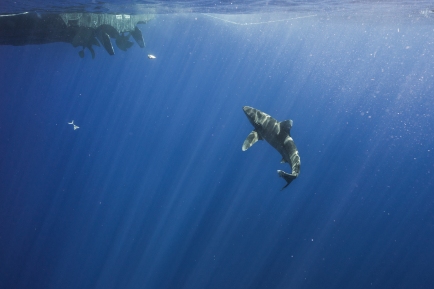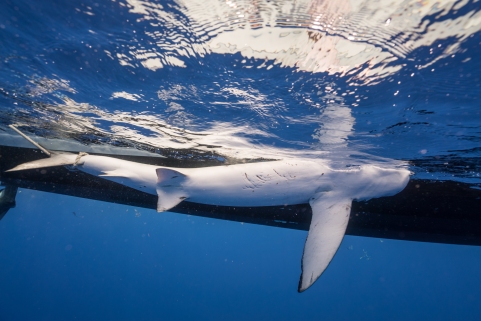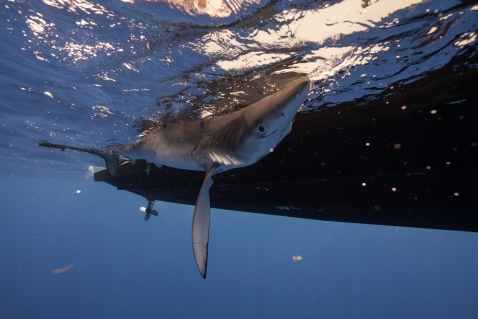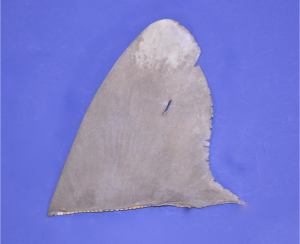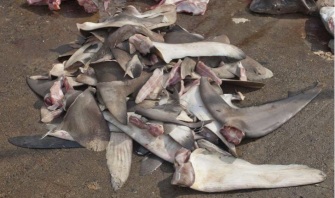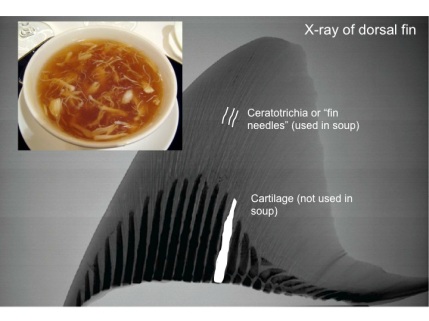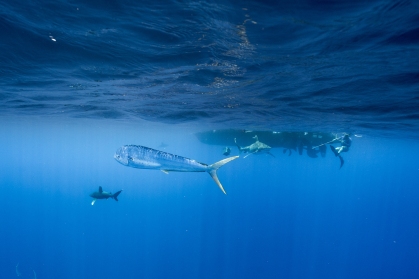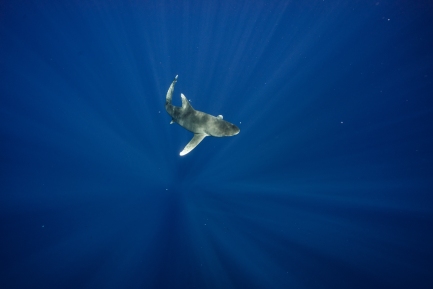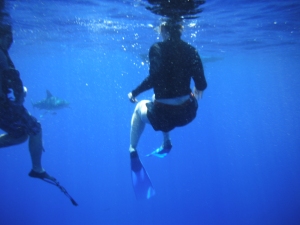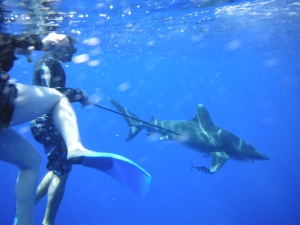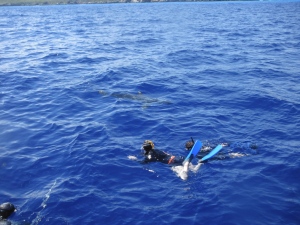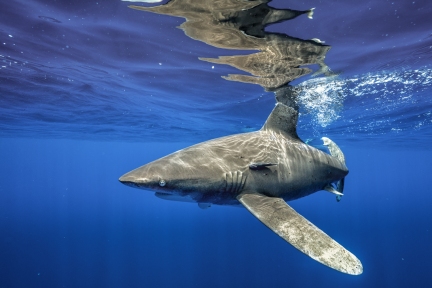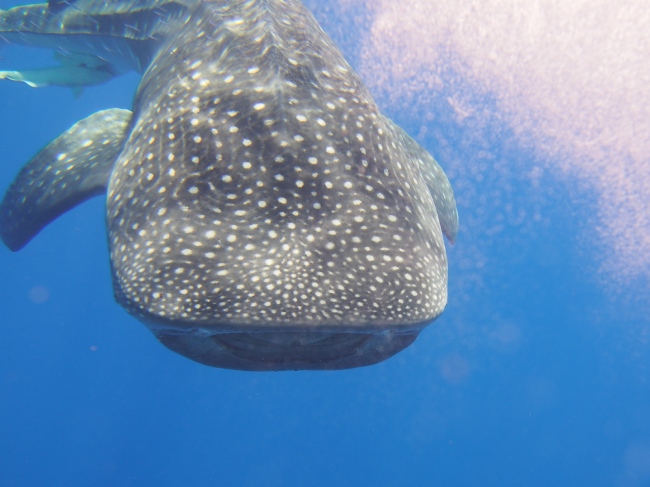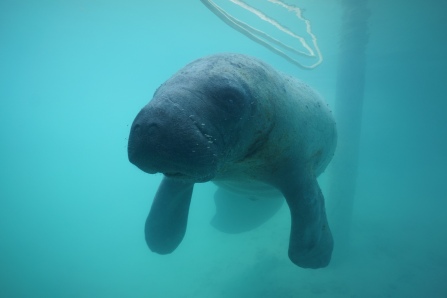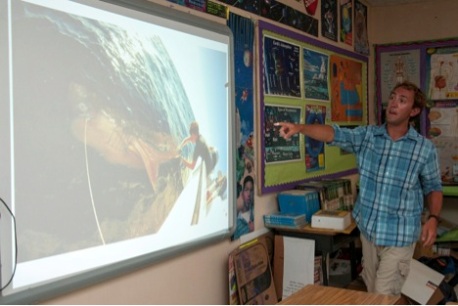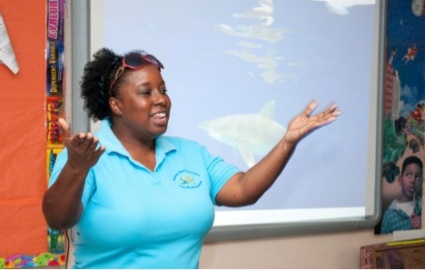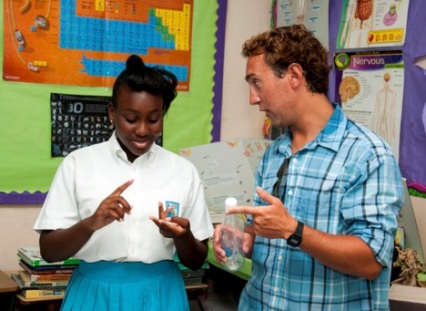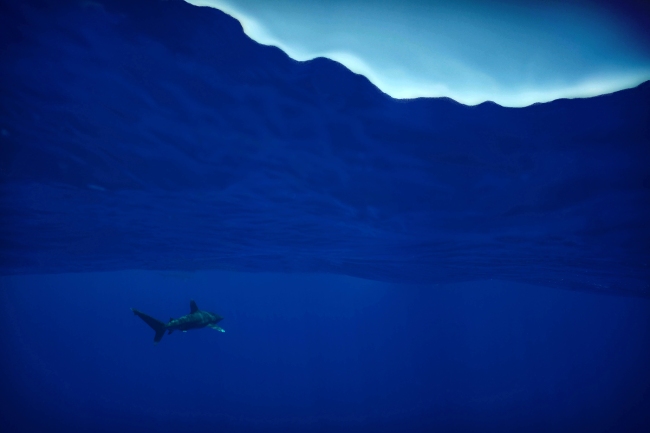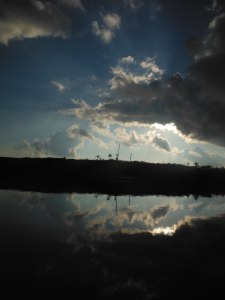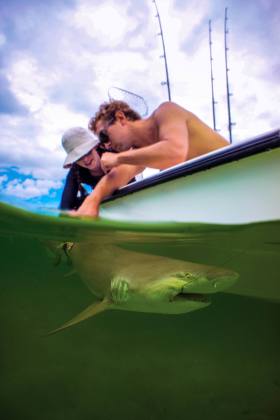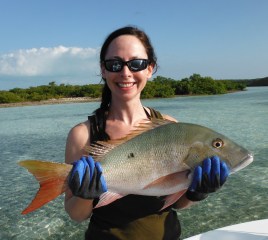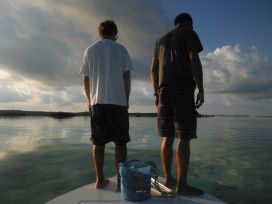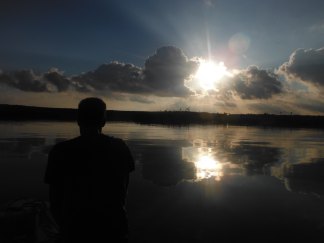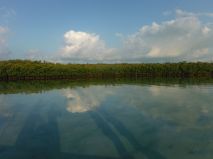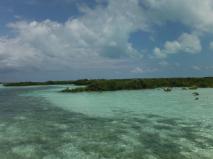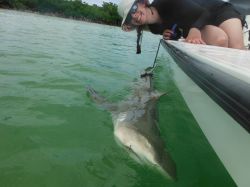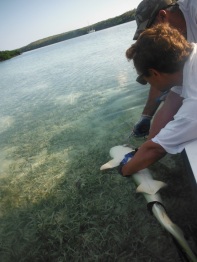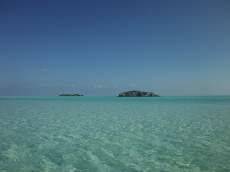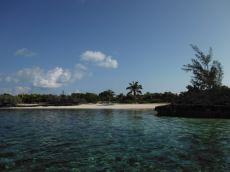Today we are set to capture and tag the 100th oceanic whitetip! We motored off, leaving the calm, aqua colored waters of the lagoon for the deep blue rolling waves of the sea. Excitement and anticipation compliment our morning coffee.
With 5 years of data coming in, the SEA Collaborative has already begun to answer important questions about the mysterious oceanic whitetip: Where do they go during the year? Do they come back? Did they get pregnant along the way? Are they having pups? How often?
It turns out that these sharks come back to the same place year after year. This especially holds true if they have round, swollen bellies: Cat Island seems to be a maternity ward for pregnant sharks!
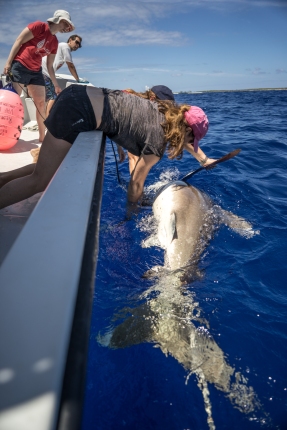
But tagging sharks is not easy business.
Sometimes the hardest part isn’t their sheer size or razor sharp teeth, it’s finding them! There were days when we just waited, waited, waited…and waited some more. The routine was the same: cut up dead fish into small chunks; tear the chunks of fish meat apart and toss them over, one at a time, into the choppy waves; scan the bright blue to the horizon for grey shadows; repeat. This part could get a bit monotonous, and, as the day went on and the hunks of fish baked in the sweltering Caribbean sun, quite stinky. I loved every second.
Someone might take out a knife, jump overboard and “scrape” fish in the water, shredding it into the tiniest of flecks, ensuring the sea’s currents would carry the smell. Sometimes we would drag fishing lines behind the boat (called trolling), hoping to lure sharks up from the depths with promises of a freshly caught fish. Mid-day a huge sparkling yellow and blue trimmed mahi mahi snagged a line, bouncing out of the white spray of the waves, pulled feverishly by the boat. Out of nowhere, a shark emerged from the blue and snapped it in half! Within seconds, the fish and the shark were gone.
Some days, only the laughing gull following the boat would go home full, smirking and snatching hunks of fish not meant for its belly. Sometimes we saw a shark, but it wasn’t interested in our bait. Other days three oceanic whitetips would be swimming around the boat within minutes. This was not that kind of day.
We decide to take a break to fish for bait (and dinner, of course!). Birds dive on the horizon. We are a couple hundred feet off the shelf break and reef. Lines get dropped in. Within minutes there is a bite on Joey’s line. The once-straight pole curls around towards its base, pointing at the water. Spinning feverishly on the reel, he quickly rolls it in, fighting with the fish on occasion by pulling back on the line ever so gently. The struggle is soon over. It’s a large strawberry grouper – this one’s dinner.
We head to a new location. The distant limestone cliffs of Cat Island are barley visible on the quiet horizon. The chum crate gets thrown over. It is full of fish heads, spines and tails. We began work on preparing today’s menu: frozen bonita with a side of leftover mahi heads. Today, Lucy was adding to the smorgasbord of delicacies by splashing in cups of bloody water from where the fish carcasses were kept. Sound delicious? It does it you are a shark. And that is why we are here after all.
There she was. Like magic. Our spirits rise. Appearing out of the blue as if she were next to the boat all along.
The thing is, once you see a shark, you have to hook it. And, once you hook a shark then you have to catch it. Then the hard work starts. Including, once you collect your data, unhooking it.
A buoy gets tossed over the boat’s side. It has a line attached to it, with a hook on the other end in the shark’s mouth. She swims away freely and pulls the buoy fast through the water. This extra effort should tire her out and make her easier to tag. Quickly hopping into the small boat, passing over clunky equipment between the crests of big rolling waves, we head toward her.
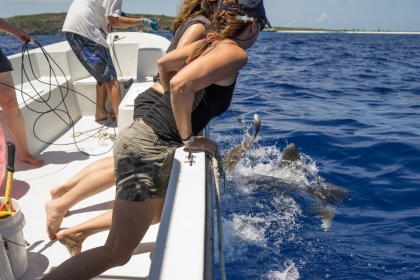
Tagging a shark requires being agile and deliberate. Most of all, it requires a deep respect for this animal. Jumping in and wrangling a shark will not make it sit quietly along side the boat. You need caution, experience and a lot of care.
The small boat is thoughtfully steered toward the shark: slowly maneuvering around, backing up, turning ever so slightly so the shark is facing the right direction. If she gets spooked, she will take off again. The boat follows the whim of the shark, not the other way around.
When she is secure along the side, the team hurriedly begins its work. The quicker this is done, the less stressed out the shark will be.
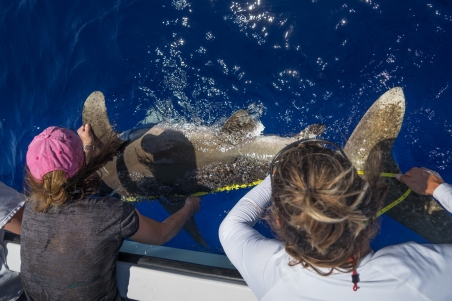
The team moves about with beauty and precision, working quietly over the shark and each other. Taking exquisite care to not harm her or put themselves in danger. No nervous energy, just deliberate quick, detailed movements. Ready to pull back on a moment’s notice. Skill takes over. Read the shark, anticipate her movements, urges. Over the years, and after many scrapes and bruises, this is something the team understands. Feeling the edges of her belly tense up before she decides to flip up her tail and smack it into your side, burning the top of your thigh with her sandpaper-like skin. Or sensing her agitation and frustration before she rears up her head, swinging it around, just missing your hand.
You must trust your colleagues and trust yourself.
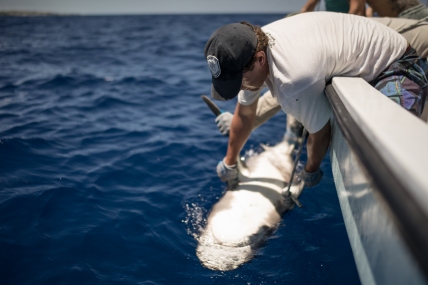
The workup usually takes less than 10 minutes. We measure it, tag it, take a small skin sample, some blood, and do an ultrasound (yes, the same as pregnant women!), and send it on its way.
Often the sharks are in groups and its friends stick around while it is with the research team. They are usually able to catch one shark after the other, and even recapture the same sharks from one year to the next.
However, this one is alone, and she is special. Our 100th shark captured and tagged! The significance of the milestone seems to escape her as she swims hastily away, engulfed by the blue, never looking back.
